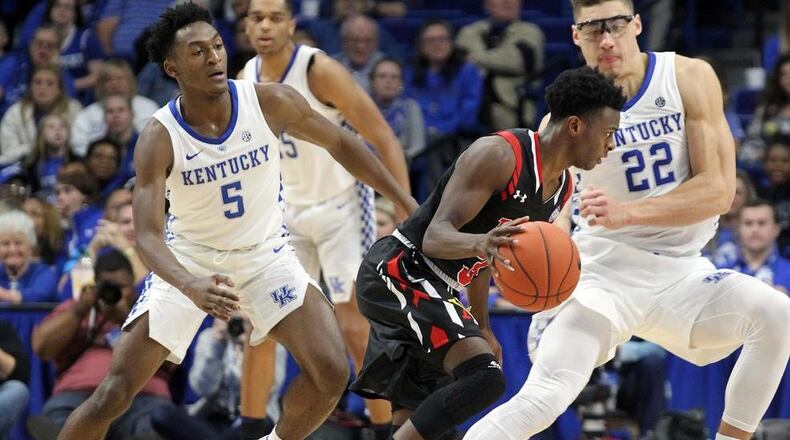Two new Georgia Tech players begin the summer semester Monday. One, VMI transfer and Brookwood High graduate Bubba Parham, comes to Tech with impressive credentials and obvious potential to contribute to the success of coach Josh Pastner's team. The role of the other, junior-college transfer David Didenko, is decidedly less clear.
“We’re excited about (Parham),” Pastner told the Atlanta Journal-Constitution. “He has that knack to score. Yes, people can say he’s moving up to the ACC (from the Southern Conference). But he has done it night in and night out.”
As a sophomore, Parham led the Southern Conference in scoring this past season at 21.4 points per game and made 39.7 % of his 3-pointers (116-for-292), which was 54th in the country. He caught attention by scoring 35 points against Kentucky in Rupp Arena on 10-for-16 shooting from 3-point range.
For a team desperate for scoring help — the Jackets were last in scoring efficiency in the ACC, were held under 60 points 11 times and ranked 331st in Division I in 3-point shooting percentage (30.7 %) – Parham looks like he could be a significant asset. (He appears to be a strong candidate to receive a hardship waiver to play immediately.)
Parham, who is listed at 5-foot-11 and 155 pounds, will have to add strength and weight to have the durability to compete in the ACC. As slight as point guard Jose Alvarado was as a freshman, he had almost 20 pounds on Parham’s listed weight. But Pastner often makes the observation about scorers that they have an innate ability. Parham, Pastner said, has that knack.
“Yes, he’s a smaller guard, but as you know, size doesn’t bother me,” Pastner said. “It’s about efficiency and production. And bottom line is the guy shot close to 40 percent from 3-point range.”
Upon Didenko's signing last November, Pastner was similarly ebullient, calling him "an elite shooter." His was an atypical recruitment. Didenko, from Boca Raton, Fla., did not draw recruiting interest in high school and then received a small amount playing AAU basketball in the summer after his graduation. He decided to enroll at Palm Beach State, a junior college, to give himself another opportunity to win the attention of Division I coaches.
The plan worked. In workouts and scrimmages prior to the start of the season, Didenko, 6-foot-8 and 230 pounds, impressed with his 3-point shooting ability. Palm Beach State coach Martin McCann said at the time that Oklahoma, Virginia Tech, Nebraska and Kansas State were among schools that were interested.
“He’s got one of those strokes where it looks like it’s going in every time he lets it fly,” McCann said then.
However, his numbers this season were ordinary. Didenko played in 27 games and started four. He averaged 3.8 points and shot 21.7 % (10-for-46) from 3-point range and 32.7 % (33-for-101) from the field. He also had 3.4 rebounds per game.
As Tech’s season went on, there were indications that Didenko would not actually enroll at Tech amidst concerns that he wasn’t ready to compete at the ACC level. But Didenko will be a Yellow Jacket, eligible immediately with three seasons to play. As ever, Paster is optimistic.
“He didn’t have a great year this year, but he’s better than his numbers showed,” Pastner said. “Listen, the kid can really shoot it.”
Pastner said he thought that Didenko, who was born in Russia, moved to the U.S. when he was 10 and has had little experience playing organized basketball, will benefit from the structure he’ll have at Tech and a change in scenery. He noted multiple times Didenko’s shooting ability that he and several college coaches witnessed last fall before the season began.
“He can be a weapon for us with his ability to shoot it,” Pastner said.
Pastner isn’t shy about pointing out Josh Okogie’s low recruiting ranking before coming to Tech and blossoming into a first-round draft pick, or that forward Moses Wright was a “zero-star recruit” before developing into a promising player.
There’s no telling what will happen, but he’ll have a story to tell if he and his staff can develop Didenko, who was not able to start for his junior-college team, into an ACC-level player.





